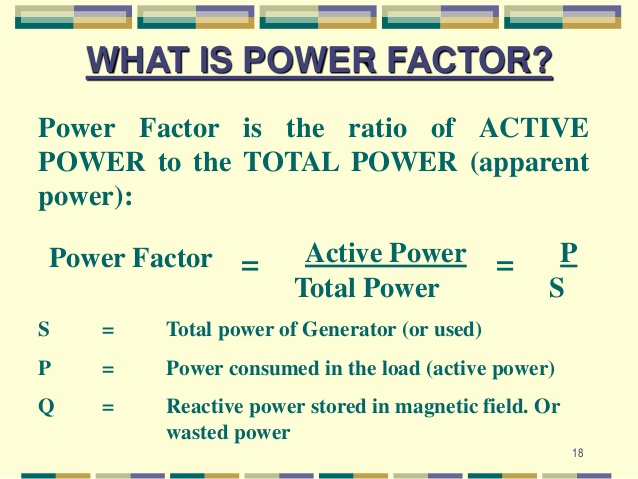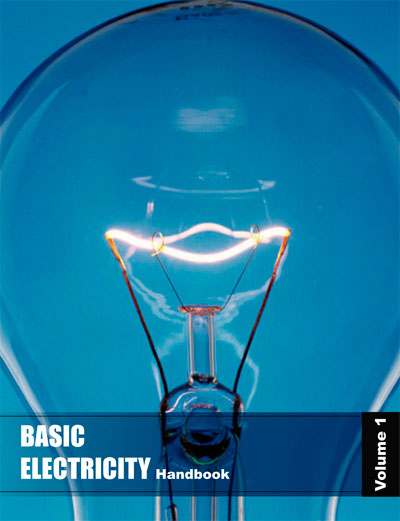
What is Power Factor?
Power Factor is the ratio of the true power of a load to the apparent power; a measure of the degree to which the voltage waveform and the current waveform are in phase with one another in an electrical circuit.
Leading Power Factor – A circuit in which the current waveform precedes (“leads”) the voltage waveform. CFLs can produce circuits with leading power factors.
Lagging Power Factor – A circuit in which the current waveform follows (“lags”) the voltage waveform. Motors or transformers can produce circuits with lagging power factors.
Non-Linear Loads – loads that change the shape of the current waveform from its original sine wave shape. This typically occurs because the load utilizes a switching action during its normal operation. Electric ballast and switch-mode power supplies (efficient power supplies used to power most modern electronic equipment) are non-linear loads.
Real (or Active) Power – the energy that is transmitted to a load to do work, expressed in Watts.
Reactive (or Non-Active) Power – the energy that is transmitted to a load but rather than doing work, it is stored in the load in an electrical or magnetic field. Reactive power is expressed in Vars.
Apparent Power – the vector sum of real and reactive power. Apparent power is expressed in VA and is relevant to utilities because they must deliver both real and reactive power (i.e. apparent power) to the loads that are on the distribution network.
Mixed Loads – An electrical circuit that has loads with a variety of load shapes (i.e. a “mix” of linear and/or non-linear loads of a variety of shapes). Most real-world electrical distribution systems consist of mixed load applications. Mixed loads tend to counteract some of the harmonics that would otherwise be present if the loads on the circuit were all of one type of load shape.
To understand power factor, visualize a horse pulling a railroad car down a railroad track. Because the railroad ties are uneven, the horse must pull the car from the side of the track. The horse is pulling the railroad car at an angle to the direction of the car’s travel. The power required to move the car down the track is the working (real) power. The effort of the horse is the total (apparent) power. Because of the angle of the horse’s pull, not all of the horse’s effort is used to move the car down the track. The car will not move sideways; therefore, the sideways pull of the horse is wasted effort or nonworking (reactive) power.
The phase angle of the horse’s pull is related to power factor, which is defined as the ratio of real (working) power to apparent (total) power. If the horse is led closer to the center of the track, the angle of side pull decreases and the real power approaches the value of the apparent power. Therefore, the ratio of real power to apparent power (the power factor) approaches 1. As the power factor approaches 1, the reactive (nonworking) power approaches 0.
Power Factor = Real Power / Apparent Power
Does low power factor mean higher energy usage?
One common misunderstanding that clouds the power factor debate involves the relationship between power factor and energy use. Some erroneously believe that a drop in PF leads to a proportional increase in energy use. For example, the assumption that a 25W CFL with a PF = 0.5 really uses twice as much power to operate as a 25W CFL with a PF = 1.0. This is not true: both CFLs use the same amount of power at the device, namely 25W.
This misunderstanding is likely based on the fact that current does increase proportionally with drops in PF. This does have real impacts on a utility’s capacity, though, as they must meet the current demands of the grid’s connected load. And the PF 0.5 CFL in our example will require twice the current delivered as the PF 1.0 CFL. But this additional current is not used in the device – it is stored in the device as an electric or magnetic field and then returned to the grid for use by other loads. Thus, for any given wattage, the HPF and LPF devices should theoretically use the same amount of energy and have the same greenhouse gas impacts.
What is the relationship between the power factor of a device and the power factor of the grid?
Ultimately, it is the power factor of the grid and its branch ac circuits, not those of the individual devices connected to the grid, which are of concern to the utilities. Utilities can increase the power factor of the grid by either installing power factor correction devices (at grid substations or at user sites) or by limiting the connected load of low power factor devices.
Cause of Low Power Factor
Low power factor is caused by inductive loads (such as transformers, electric motors, and high-intensity discharge lighting), which are a major portion of the power consumed in industrial complexes. Unlike resistive loads that create heat by consuming kilowatts, inductive loads require the current to create a magnetic field, and the magnetic field produces the desired work. The total or apparent power required by an inductive device is a composite of the following:
• Real power (measured in kilowatts, kW)
• Reactive power, the nonworking power caused by the magnetizing current, required to operate the device (measured in kilovars, power kVAR)
Reactive power required by inductive loads increases the amount of apparent power (measured in kilovolt amps, kVA) in your distribution system. The increase in reactive and apparent power causes the power factor to decrease.
Why Improve Your Power Factor?
Some of the benefits of improving your poor power factor are as follows:
• Your utility bill will be smaller. Low power factor requires an increase in the electric utility’s generation and transmission capacity to handle the reactive power component caused by inductive loads. Utilities usually charge a penalty fee to customers with power factors less than 0.95. You can avoid this additional fee by increasing your power factor.
• Your electrical system’s branch capacity will increase. Uncorrected power factor will cause power losses in your distribution system. You may experience voltage drops as power losses increase. Excessive voltage drops can cause overheating and premature failure of heating lighting, motors and other inductive equipment.

This 100+ page e-book is a great guide for those who have a basic interest in the field of electricity. This well-illustrated e-book, coupled with some basic knowledge of electricity, will give you a broad theoretical background in this fundamental subject.
CONTENTS